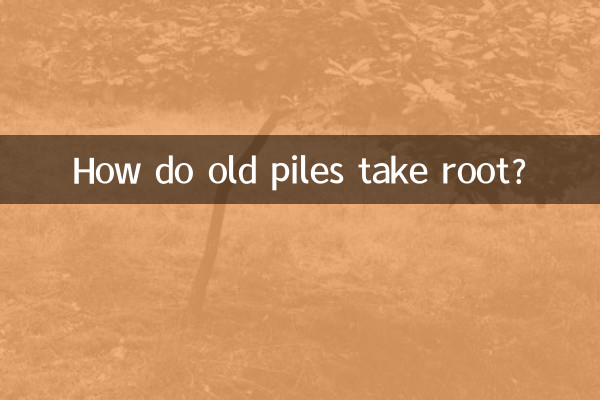How do old piles take root?
In recent years, gardening enthusiasts have gradually paid more and more attention to the old pile rooting technology, especially in the fields of bonsai making and plant propagation. Rooting old piles can not only extend the life of plants, but also provide more possibilities for gardening creations. This article will combine the hot topics and hot content on the Internet in the past 10 days to give you a detailed introduction to the methods and techniques of rooting old piles.
1. Basic principles of rooting old piles

Rooting of old piles refers to the process of using the old pile parts of plant stems or roots to promote them to grow roots again through appropriate treatment and environmental regulation. This technology is commonly used in bonsai making, ancient tree protection, and plant propagation.
| Influencing factors | Description |
|---|---|
| plant species | The rooting ability of different plants varies greatly, such as conifers, banyan trees, etc., which are easier to root. |
| Old pile status | Healthy, disease-free and pest-free old piles have a higher rooting success rate. |
| environmental conditions | Environmental factors such as temperature, humidity, and light have a direct impact on rooting. |
2. Common methods for rooting old piles
According to recent popular discussions on the Internet, here are several common rooting methods for old piles:
| method | Operation steps | Applicable plants |
|---|---|---|
| hydroponics | Soak the old piles in clean water and change the water regularly to keep the water clean. | Banyan tree, green radish, etc. |
| Shapei method | Insert the old pile into moist sandy soil to maintain humidity and avoid direct sunlight. | Conifers, rhododendrons, etc. |
| hormone treatment | Use rooting powder or rooting liquid to soak the base of the old pile to promote root growth. | Most woody plants |
3. Precautions for rooting old piles
In order to improve the success rate of old pile rooting, you need to pay attention to the following points:
1.Choose the right old pile: The old pile should be healthy and disease-free, with intact epidermis and a certain degree of vitality.
2.control humidity: During the rooting process, maintaining proper humidity is key, but avoid overwatering, which can lead to rot.
3.avoid bright light: In the early stage of rooting, the old pile should be placed in a scattered light environment to avoid direct sunlight.
4.Regular inspection: Observe the status of old piles and deal with possible problems in a timely manner, such as mold or insect damage.
4. Analysis of hot topics across the entire network
After combing through the hot topics on the Internet in the past 10 days, we found that the following content is related to the root of the old pile:
| topic | heat index | Main content |
|---|---|---|
| Tips for rooting old bonsai piles | 85 | Share practical tips and cases on how to take root in old bonsai piles. |
| Ancient tree protection and rooting technology | 78 | Discuss the protection and rooting techniques of ancient trees and old stumps. |
| Use of rooting hormone | 92 | Discuss the types of rooting hormones and how to use them. |
5. Summary
Rooting old piles is a highly technical task and requires the selection of appropriate methods based on plant species and environmental conditions. Through scientific handling and careful management, the success rate of rooting old piles can be significantly improved. I hope the content of this article can help you with your gardening practice.
If you have other questions about old pile rooting, please leave a message in the comment area to discuss!

check the details

check the details